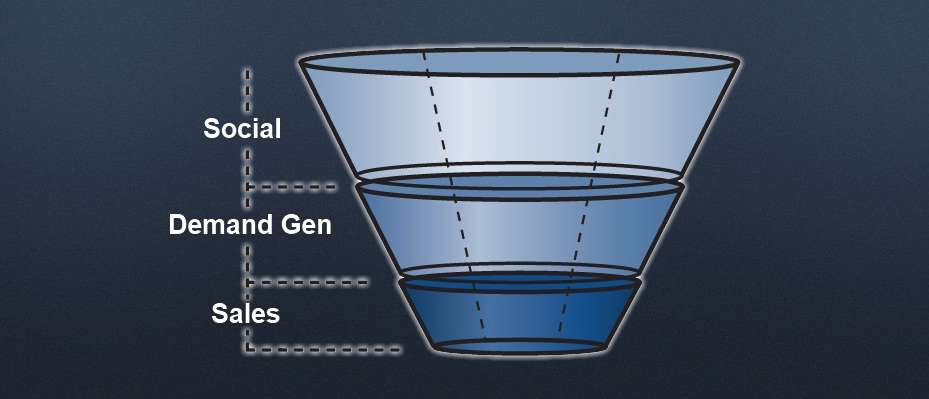History
The traditional revenue engine is growing. It started with a sales stage. Then a demand generation stage was stacked on top. Now another stage is appearing: social. With the advent of new technology these 3 stages are being integrated into a single, predictable process.
Starting from the bottom up…
Stage 3: Sales
This stage is as old as trade itself. There have been many methods of progressing through it but the final deliverable is always the same – close the deal. CRM is the technology of choice here. gry kasyno myster In recent years this stage has been pinched down as marketing has taken a more active role in educating prospects. darmowe gry automaty online However, its importance has not been lost and it will always remain as the most crucial stage and final stop on the revenue funnel.
Stage 2: Demand Generation
Demand generation refers to marketing efforts directly related to revenue creation. They usually come in the form of lead generation campaigns, nurturing, and opportunity acceleration. This stage has grown in importance over the past decade as technologies such as marketing automation have increased visibility of results from demand generation efforts and shown a direct link to revenue. lotto zakłady sportowe This is where the revenue engine started…until now.
Stage 1: Social
Traditionally marketing disciplines such as communications, public relations, branding, and advertising were done outside of the revenue engine. They were done to indirectly increase the potential for revenue but were not linked directly to pipeline creation. As social media consumed the business world, these activities moved inside the social domain. Communications and PR became a two way conversation instead of a mass message, brand perception moved from that of an individual to one defined by the public’s opinions as promoted through Twitter and Facebook, and advertising moved from a mass push media to channels such as YouTube which allow for direct comments, feedback, and viral promotion. The social media explosion has changed the way these activities are carried out.
But the changes have not stopped there. Social monitoring and profiling technologies now allow us to track these social activities and tie them directly to the demand generation stage. A brand image can now be quantified by monitoring social activity and the individuals engaging with a brand can now enter the revenue funnel before directly engaging with a company. As a marketer I can now see what messages are engaging my audience, find the individuals that are engaging with content, and bring them into my demand generation efforts with targeted campaigns or personalized conversations.
The technologies supporting this are growing in number and functionality as well as gaining more attention in the B2B arena. From Raidan6 to PostRank, there is no end to the tools offering benefit in the social space. Integration of social profile data to marketing and sales automation systems is also becoming a standard as this stage of the revenue funnel continues to mature.
Summary
The addition of the social stage gives organizations the opportunity to track the revenue funnel from awareness to customer. This can increase accuracy when predicting revenue trends such as volume and timing. Tools such as Revenue Performance Management (RPM) are now offering a single platform to track all of this data. Although they haven’t yet included the social stage I’m sure it’s only a matter of time, especially given the recent interest CRM vendors have taken in social tools.
Have you integrated the social stage into your revenue engine?
Joe Gelata
Joe helps clients achieve maximum output from their revenue engine by leveraging best practice business processes and technology such as marketing automation, CRM, and analytics platforms. With experience in sales and marketing from an agency and client perspective Joe is well positioned to build new and streamline existing business processes, automate them, and identify further opportunities for revenue growth.
